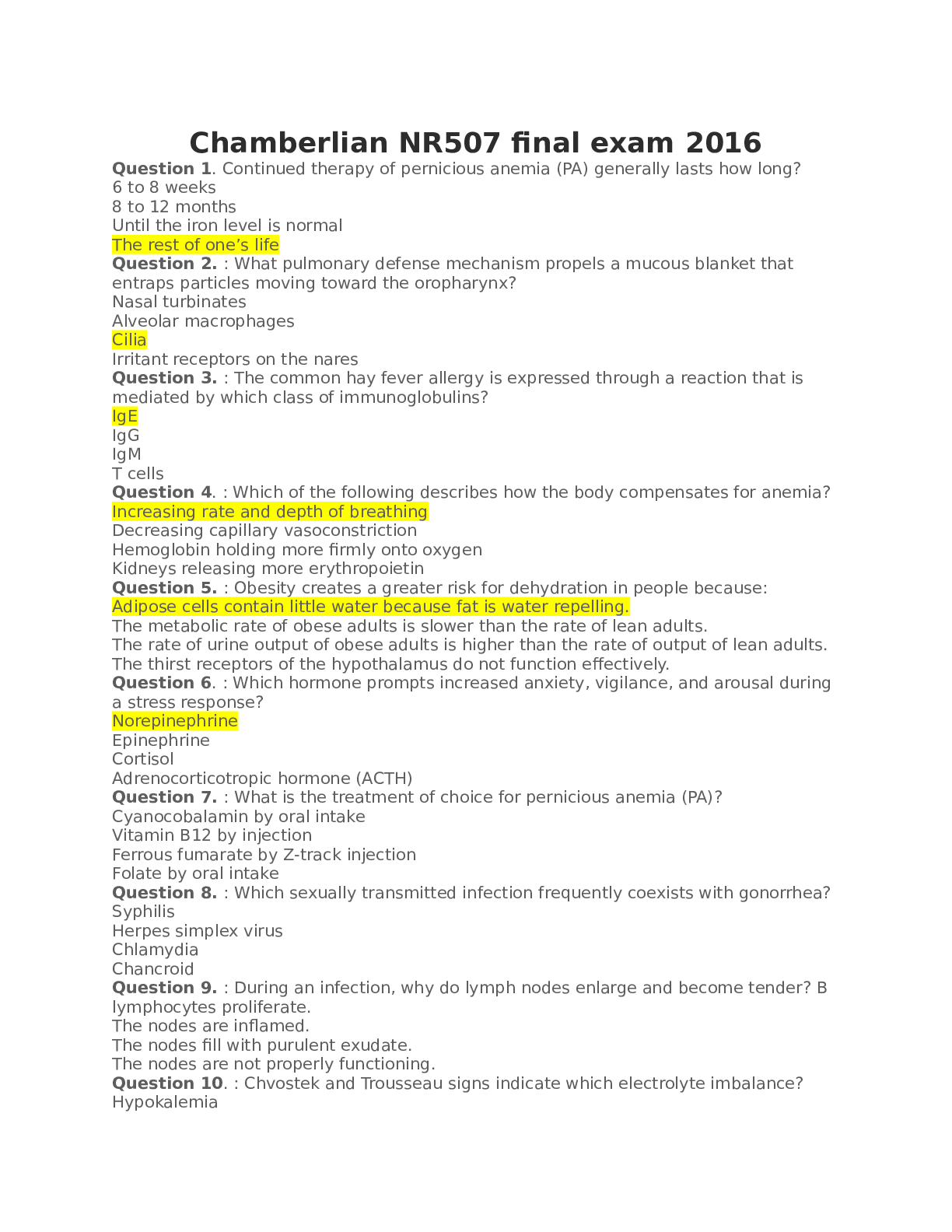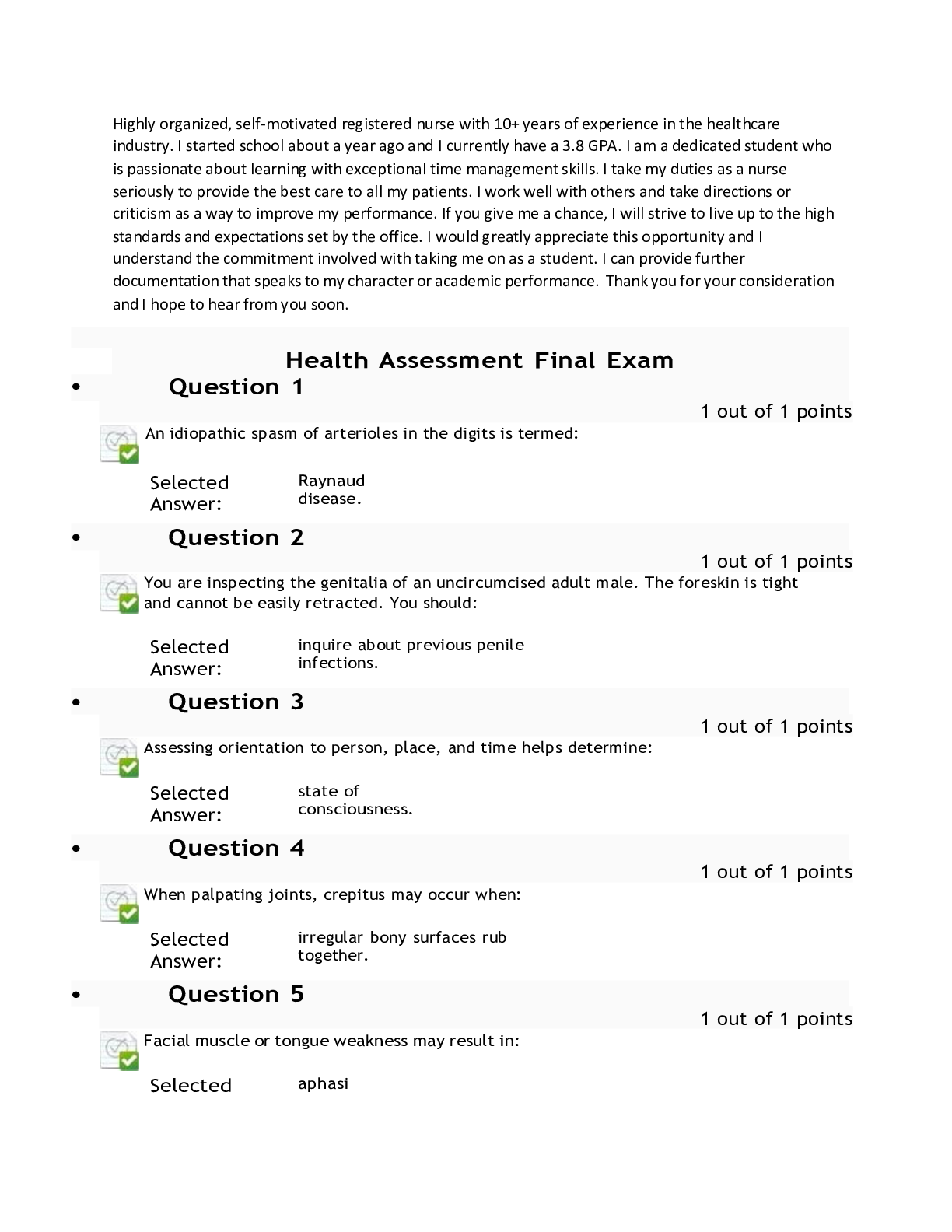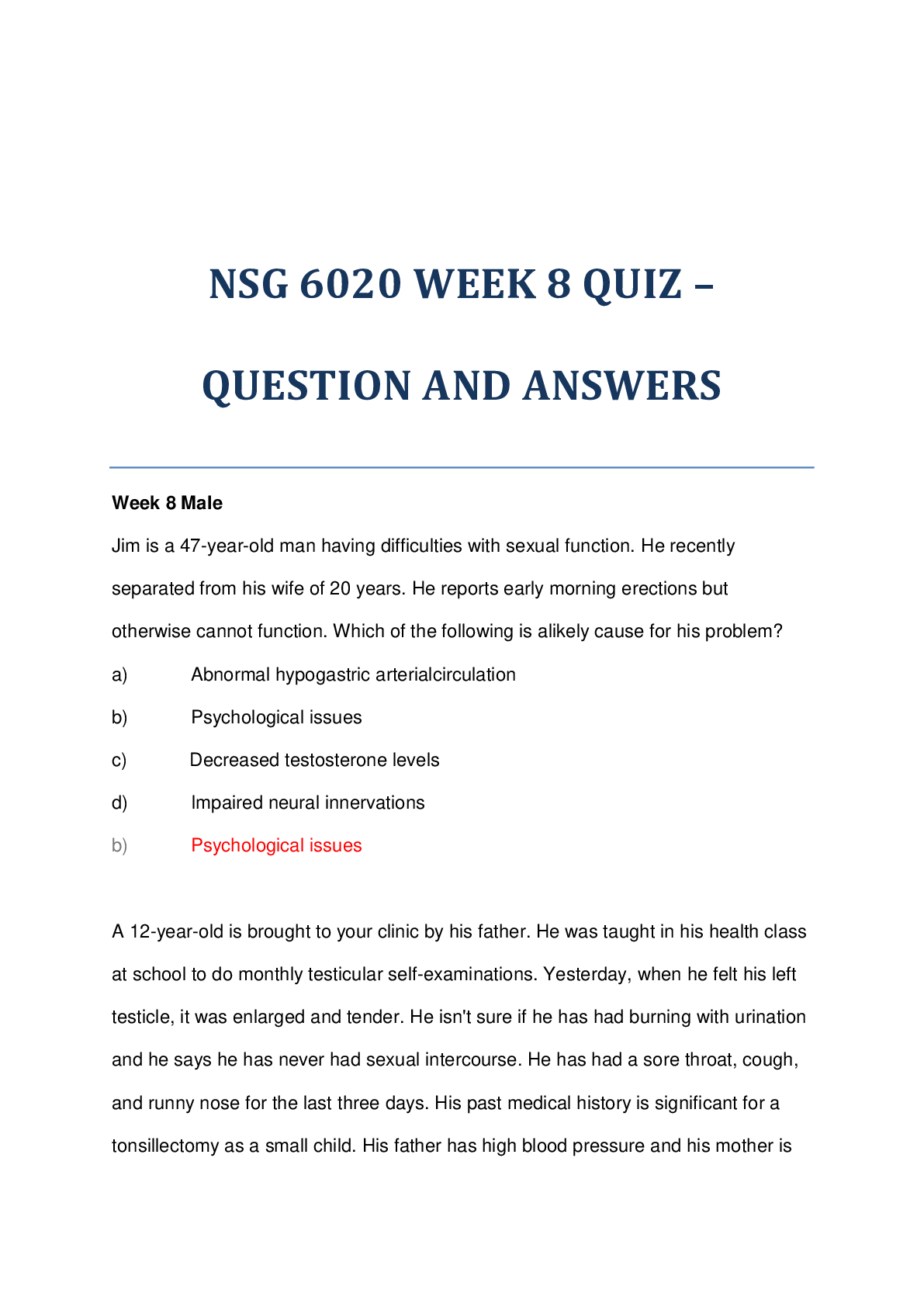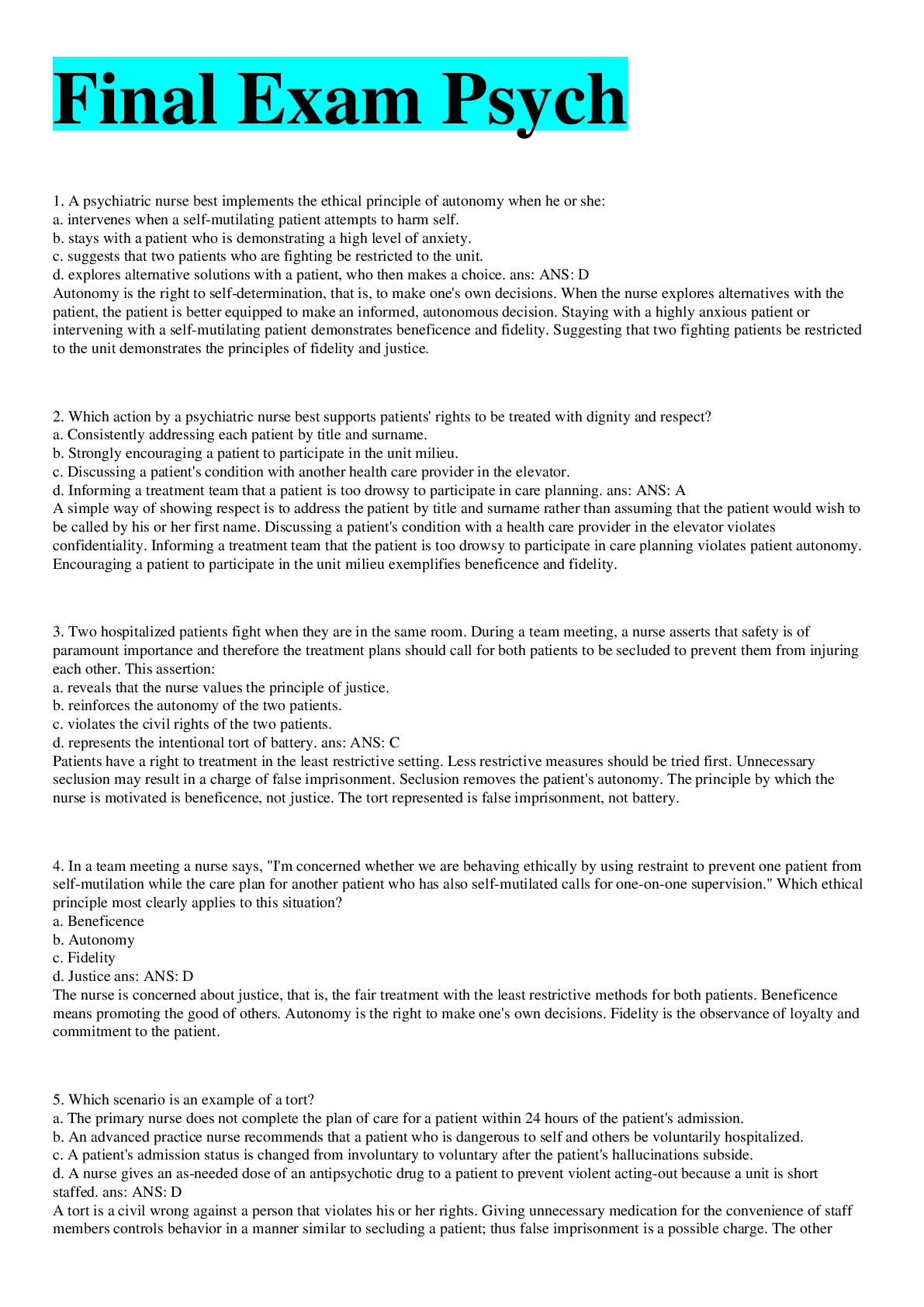Psychology > QUESTIONS & ANSWERS > PSY 550 FINAL EXAM 1 – QUESTION AND ANSWERS|GRADED A (All)
PSY 550 FINAL EXAM 1 – QUESTION AND ANSWERS|GRADED A
Document Content and Description Below
PSY550 Final Exam: Research Methods Instructions: This is an open-book and open-notes exam. You have 2 hours to complete the exam. The test is worth 100 points; each item is worth 10 points. 1. Chu... ck Wagon is very excited about the within-subjects approach. “Now I’ll never need to run large numbers of subjects again,” he says. However, Chuck has forgotten that within-subjects designs may be a) useless, b) impossible, c) confounded by order effects, or d) impractical when excessive subject time spent in an experiment makes data inaccurate. Give an example of each of these four objections. Answer: a). useless- a within-subjects design would be useless if we were studying the effectiveness of two learning programs (reading for instance). If a student completed one program to learn how to read, it would be useless for them to complete the other program as they already gained the skills in the first program, and thus could not truly test the effectiveness of the second program. b). impossible- a within-subjects design is impossible when you fail to find a sample that is representative of the population. For instance, if gender is a variable (independent variable), a participant cannot be both male and female, and thus it is impossible to measure within-subjects. c). confounded by order effects- If you were to provide tips or suggestions on how to play an instrument to see if they improve over prior to the tips, but there is no way to know if improvement in the skill came from the tips provided or from practicing the instrument. The order of the conditions cannot be changed as the participants cannot unlearn the tips that were provided to them. d). impractical when excessive subject time spent in an experiment makes data inaccurate- If too many conditions are presented to participants, or conditions are presented for excessive lengths of time, participants are likely to become fatigued or even drop out of the study. If a participant becomes fatigued, they are less likely to be able to pay attention to the conditions and thus, likely to not provide accurate information to the research. 2. Explain the pros and cons of longitudinal, cross-sectional, and sequential designs. Answer: -Longitudinal design is defined in our text as a developmental research design that is utilized to study the changes of its participants across a life span. This is done by observing the same set of participants and different points in time, and measuring the same dependent variable at each point in time (Privitera, 2017). A pro to this is the ability to learn a developmental course through continuity and it eliminates cohort. A con to this design si that these are usually costly designs, they take a long time, participants can drop out or pass. Additionally, long term research increases the chances of unpredictable outcomes. -Cross-sectional design is defined in our text as a developmental research design in which participants are grouped by their age and participant characteristics are measured in each age group (Privitera, 2017). Pros of this design are the low cost and speed of study, the ability to prove or disprove assumptions and multiple variables are viewed at the time of the data snapshot. Cons of this design study are that they cannot be used to analyze behaviors, they are useless for determining cause and effect and they cannot show any developmental progress. This study source was downloaded by 100000831988016 from CourseHero.com on 04-28-2022 13:39:53 GMT -05:00 https://www.coursehero.com/file/46002889/Finaldocx/ -Sequential design is defined in our text as a developmental research design that combines longitudinal and cross-sectional techniques by observing different cohorts of participants over time at overlapping times (Privitera, 2017). A pro of this design study is the ability to compare cohorts as it is a hybrid design and it is not very costly. A con is the complications that come with this type of design. Determining the cause behind a trend is difficult to ascertain in this design. 3. After watching nursery-school children, Ken Garoo wants to test the hypothesis that some toys are more fun to play with than others. He decides to compare “fun” toys (blocks) with “unfun” toys (stuffed animals). He also wishes to see if there is a sex difference, as well, so sex is added as an independent variable. A) What kind of design is needed? B) Diagram it out. C) Assuming 20 subjects are needed per cell, how many subjects are needed for this study? Answer: (a) Randomized block design (b) Male Female Total Fun toys Unfun toys Total 4. Define the term quasi-experiment and discuss the pros and cons of this research method. Answer: Quasi-experimental research is defined as the use of methods and procedures to make observations in a study that is structured similar to an experiment (Privitera, 2017). However, the conditions and experiences of the participants lack some control because the study lacks random assignment, includes a preexisting factor and does not include a comparison or control group. Pros of this design are monitors independent variables to ensure that unwanted variables are eliminated and thus this design can produce the best results. The cons to this can be practical and ethical issues and lacks comparison/control. 5. Bill Board is “lording” his SAT score over his friend, Rhoda Dendron, who took the ACT. “You only got a 25 in math,” he chortled, “while I got a 300 in math.” Given that the SAT has a μ of 500 and a σ of 100, and the ACT has a μ of 20 and a σ of 5, what is wrong with Bill’s logic (give the answer in both z scores and percentile ranks). Answer: z= x−μ σ Bill: ¿ 300−500 100 = -2 300 800 = 37.5% This study source was downloaded by 100000831988016 from CourseHero.com on 04-28-2022 13:39:53 GMT -05:00 https://www.coursehero.com/file/46002889/Finaldocx/ Rhoda = 25−20 5 = 1 25 36 = 69% Bill’s logic is faulty because he is comparing tests with different means, different scoring components. 6. For each of the following examples, explain whether the researcher has made a correct decision or has made a Type 1 or Type 2 error. Explain why. a) Dr. G rejects the null hypothesis although the independent variable had no effect. b) Dr. R rejects the null hypothesis when it is false. c) Although the independent variable had an effect, Dr. E does not reject the null hypothesis Answer: (a) Type 1, if the independent variable has no effect, it should not be rejected (type 1 rejects the hypothesis when it is in fact true) (b) Correct (c) Type 2, if the independent variable has an effect it should be rejected (type 2 does not reject the null hypothesis when the alternative is true) 7. A researcher has studied subjects’ ability to learn to translate words into Morse code. He has experimented with two treatment conditions: in one condition, the subjects are given massed practice; they spend 8 full hours on the task. In the other condition, subjects are given distributed practice; they also spend 8 hours, but their practice is spread over four days, practicing 2 hours at a time. After the practice, all subjects are given a test message to encode; the dependent variable is the number of errors made. The researcher has matched the subjects on intelligence. The results are in the following table. Decide which statistical test would be appropriate, carry out the test, and evaluate the outcome. Assume a significance level of .05 and that the direction of the outcome has not been predicted. Massed Practice Distributed Practice S1 6 S1 5 S2 4 S2 3 S3 3 S3 2 S4 5 S4 2 S5 2 S5 3 Answer: Subject Massed Distributed d=Massed-distributed 1 6 5 1 2 4 3 1 3 3 2 1 4 5 2 3 5 2 3 -1 This study source was downloaded by 100000831988016 from CourseHero.com on 04-28-2022 13:39:53 GMT -05:00 https://www.coursehero.com/file/46002889/Finaldocx/ H0=μd=0 Ha=μd≠ 0 The mean and standard deviation of d are: d´ = ∑d n = 1+1+1+3−1 5 =1 sd=√ ∑(d−d´) 2 n−1 df =n−1=5−1=4 Given = 0.05, we use a t table for a two tailed test; thus reject the null hypothesis if |t|>2.776 The test statistic is: t= ´d sd √n = 1 1.41 √5 =1.581 Since t is less than 2.776, fail to reject null hypothesis. There is no significant difference. 8. Explain the value of reversal designs (ABA designs) in single-case research. Answer: ABA designs, also known as reversal designs, is defined in our text as, a single-case experimental design in which a single participant is observed before (A), during (B), and after (A) a treatment or manipulation (Privitera, 2017). This is to say that a participant is selected and documented as is, a treatment is introduced and documented and then the treatment is removed and documented to determine how effective the treatment is. This is valuable in research as a baseline is created. This method can allow a researcher to confirm a treatment effect by showing that behavior changes systematically with conditions of no treatment (baseline) and treatment. 9. Explain how a one-way analysis of variance works. How do you use between- and withingroup variability? Answer: One-way analysis of variance is applied when we need to check for the equality of variance of more than two (not equal to) set of values, the null hypothesis being that there is no difference between the means of all the set of values against the alternative that there is a difference in means of at least two set of values. This test is used when different participants are observed at each level of a factor and the variance of a given population is unknown. The between- group variability denotes the difference between the values of two sets, whereas the within-group variability means the difference between the values of the same set of values. This study source was downloaded by 100000831988016 from CourseHero.com on 04-28-2022 13:39:53 GMT -05:00 https://www.coursehero.com/file/46002889/Finaldocx/ 10. Describe a two-matched groups design. How is the matching done? Answer: A matched pairs design is a within-subjects research design in which participants are matched, either experimentally or naturally, based on preex [Show More]
Last updated: 1 year ago
Preview 1 out of 5 pages

Also available in bundle (1)
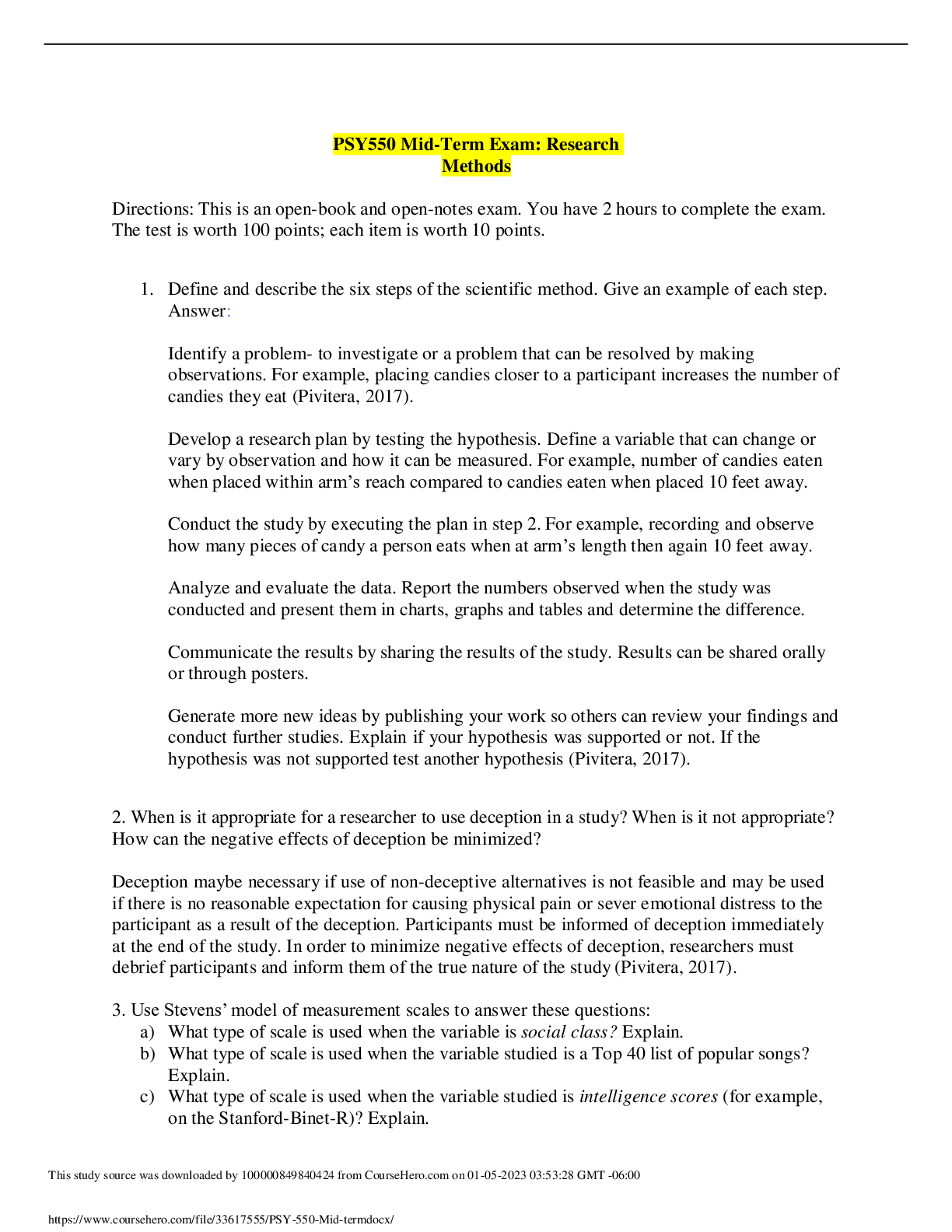
Grand Canyon University | PSY 550 FINAL AND MIDTERM EXAM|GRADED A+
1 EXAM PSY 550 Midterm Exam: Research Methods|Grand Canyon University 2 EXAM Grand Canyon University|PSY 550 FINAL EXAM 1 – QUESTION AND ANSWERS|GRADED A
By Nutmegs 1 year ago
$18
2
Reviews( 0 )
Document information
Connected school, study & course
About the document
Uploaded On
Apr 28, 2022
Number of pages
5
Written in
Additional information
This document has been written for:
Uploaded
Apr 28, 2022
Downloads
0
Views
90

.png)
.png)
.png)
.png)
.png)
.png)


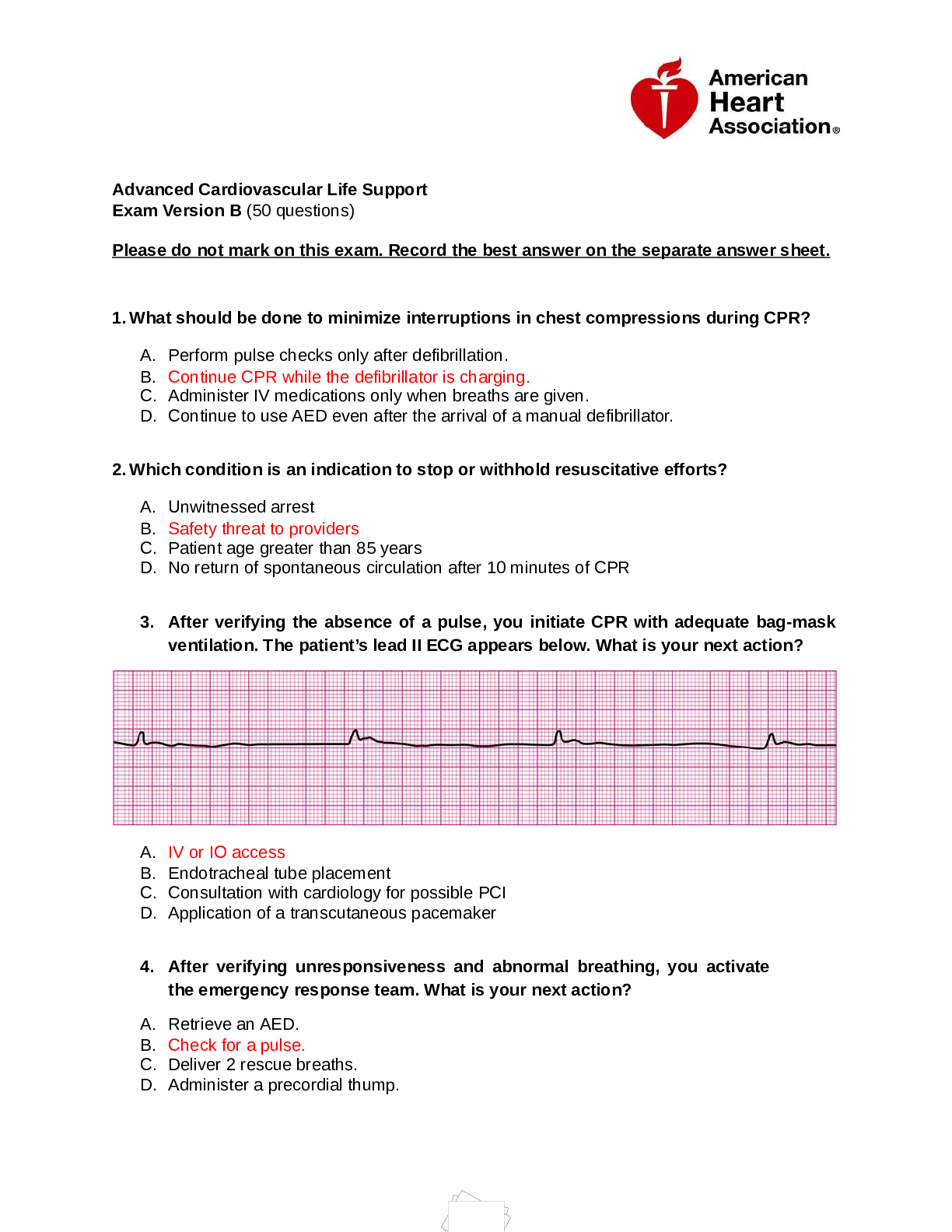
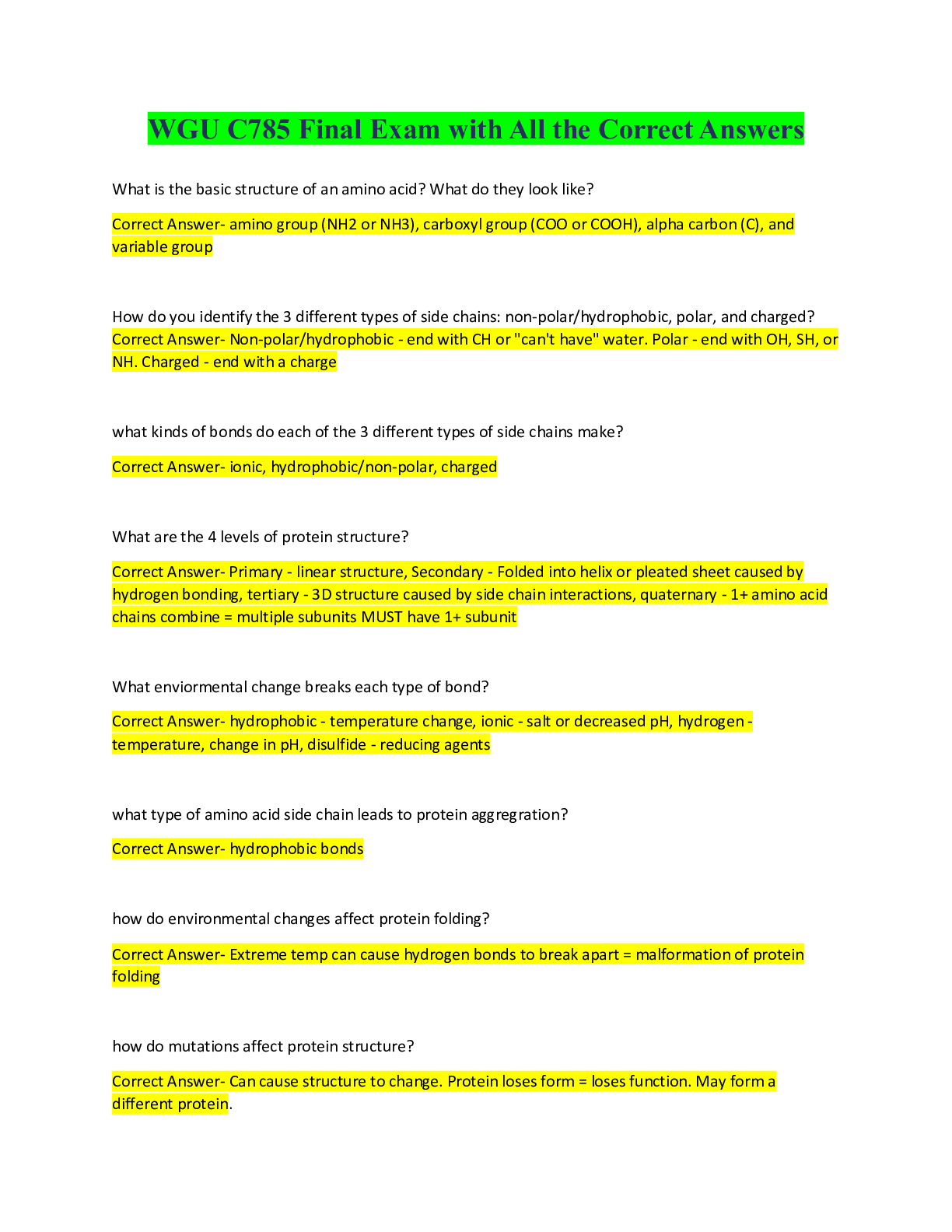
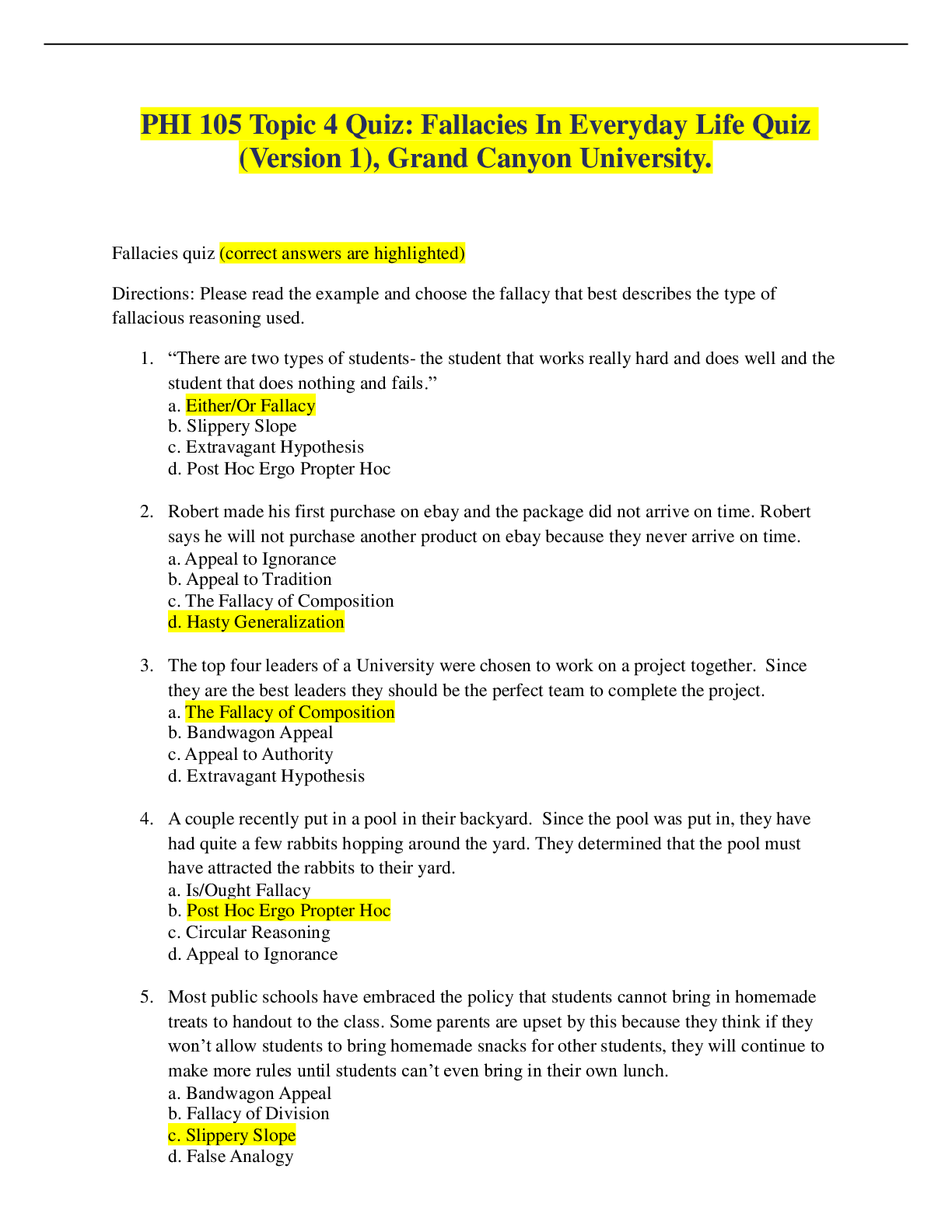
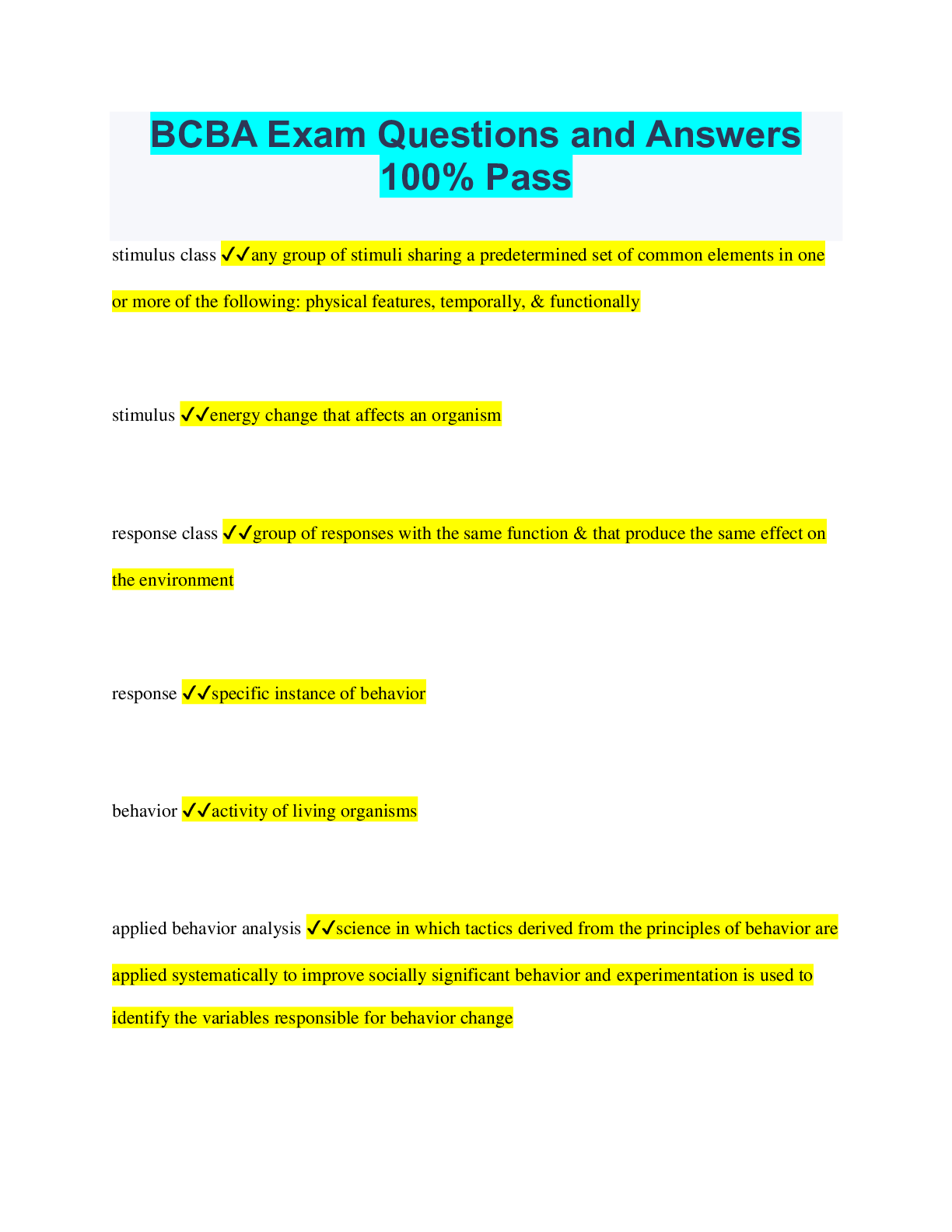
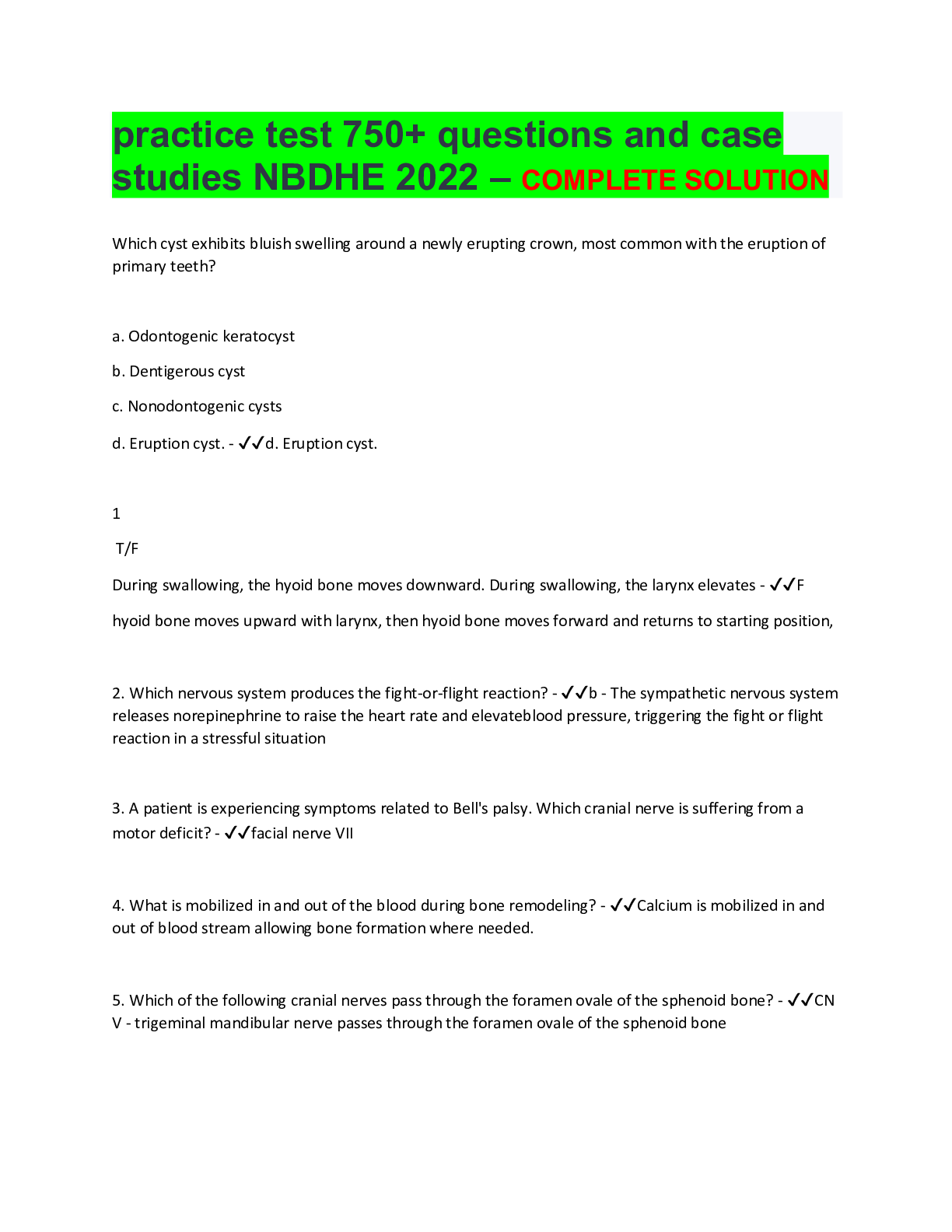
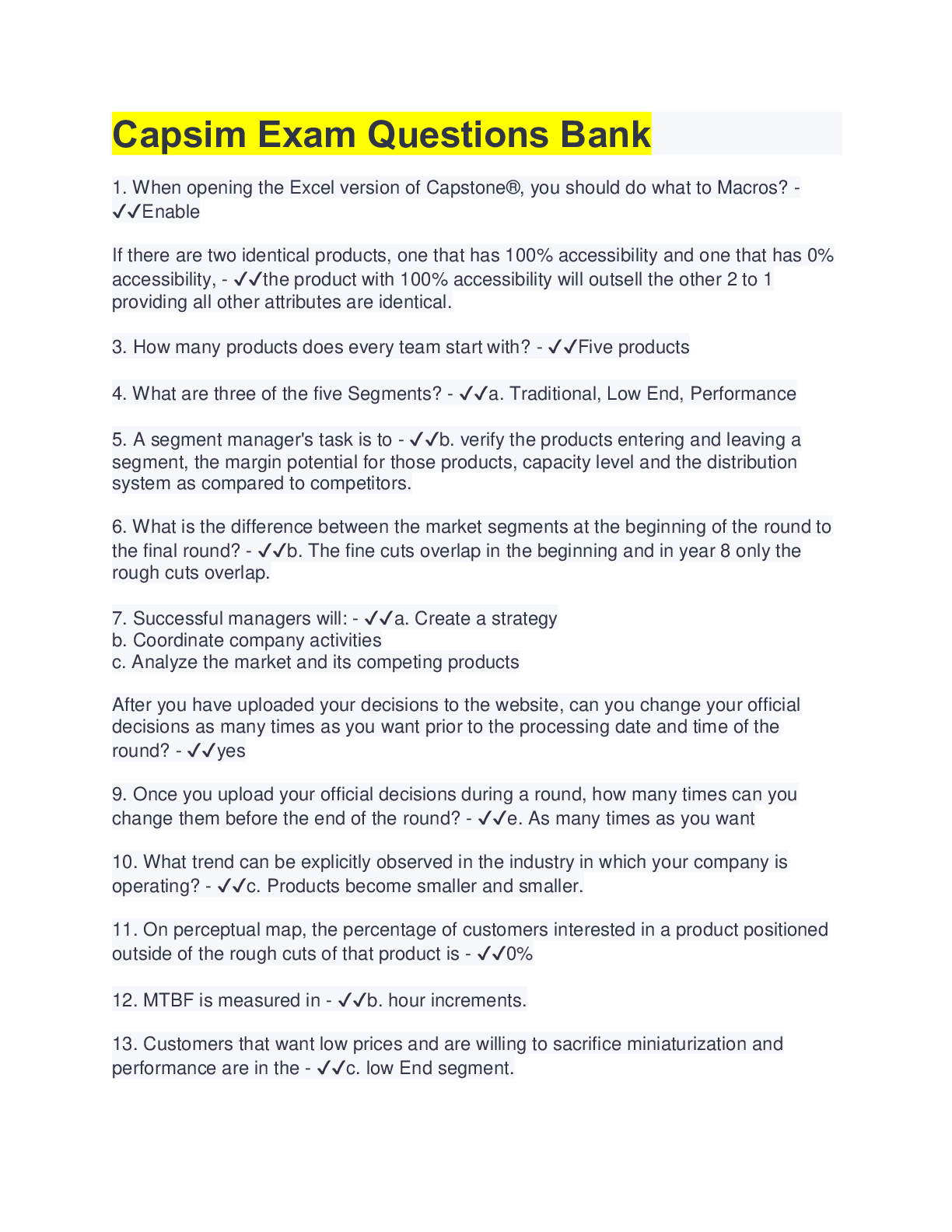
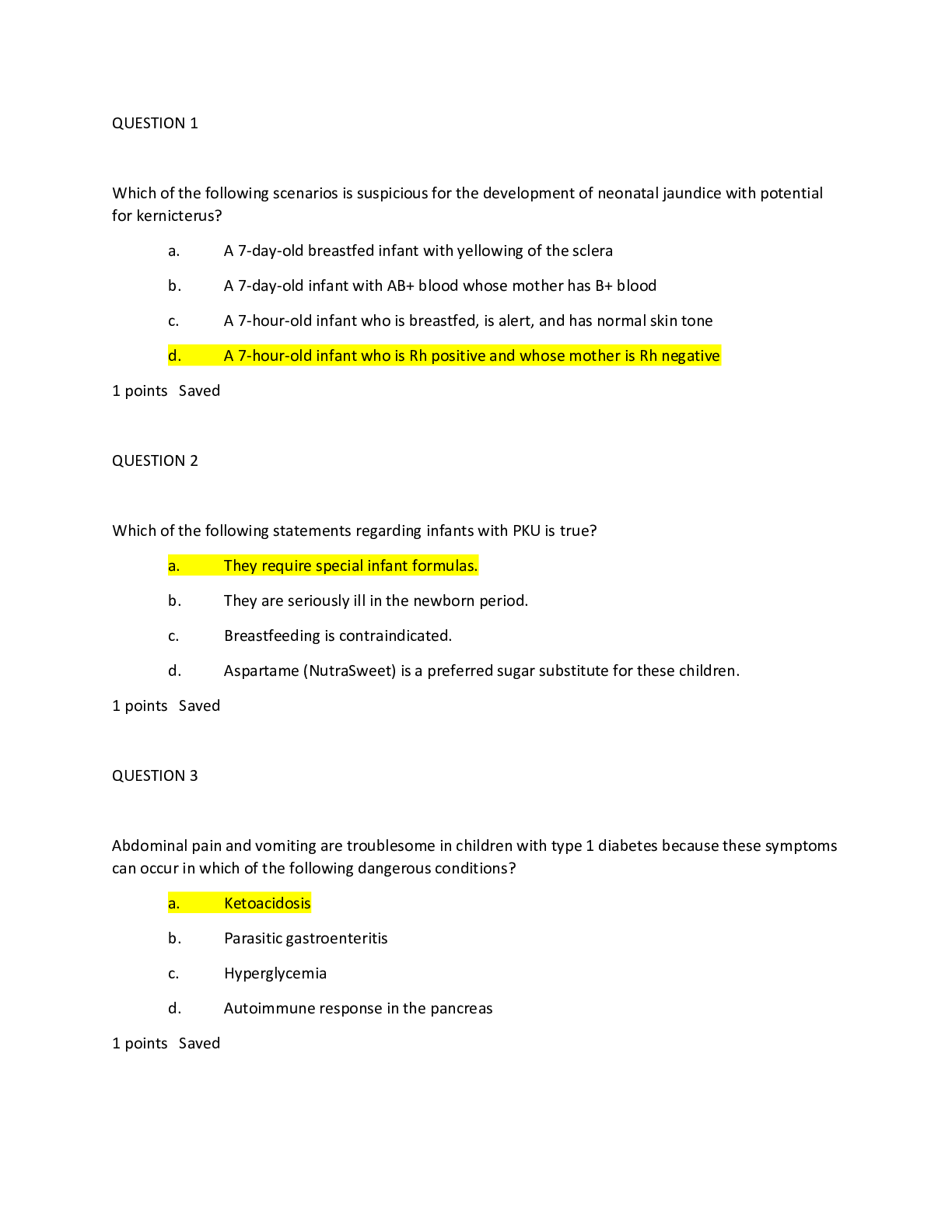
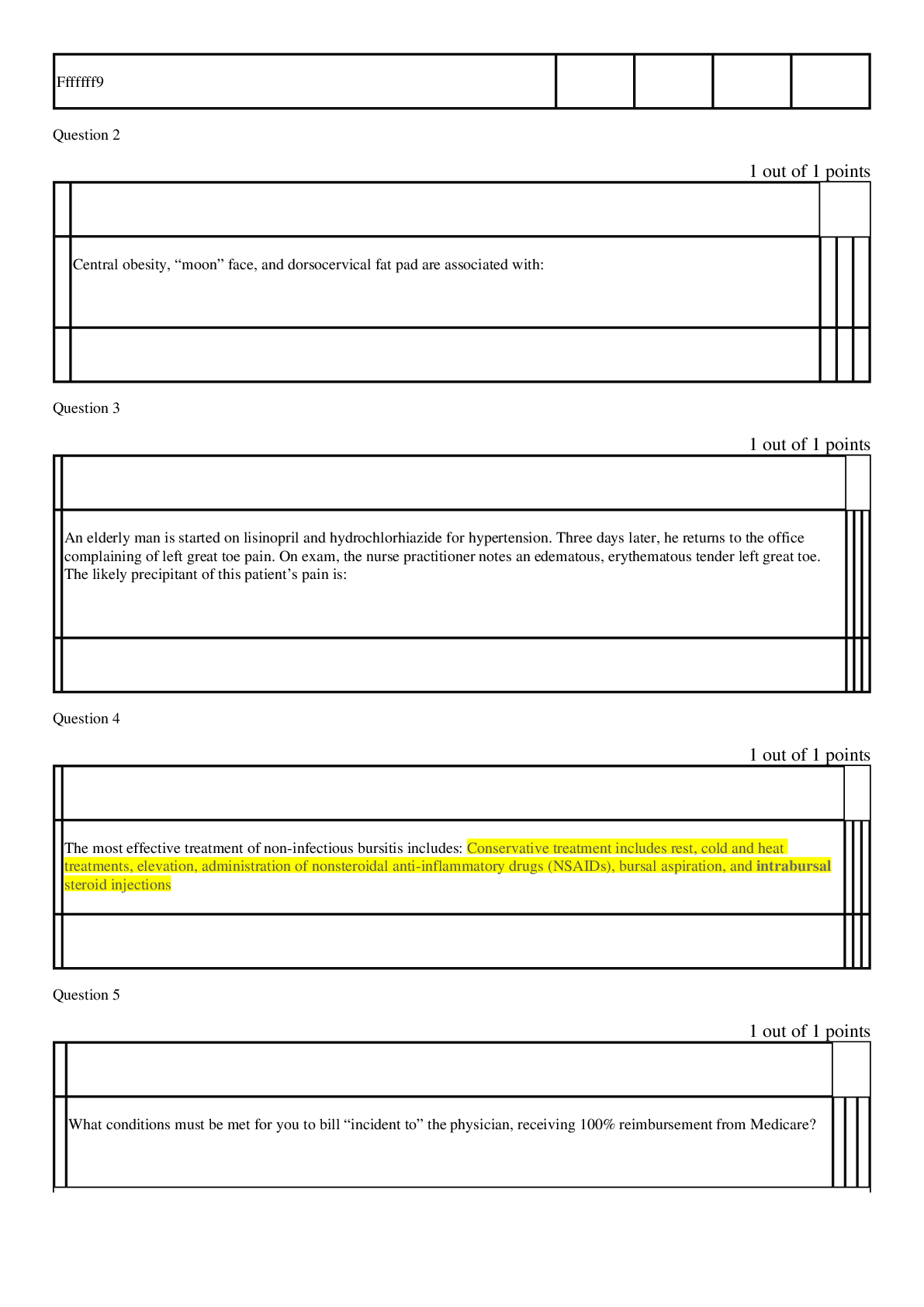
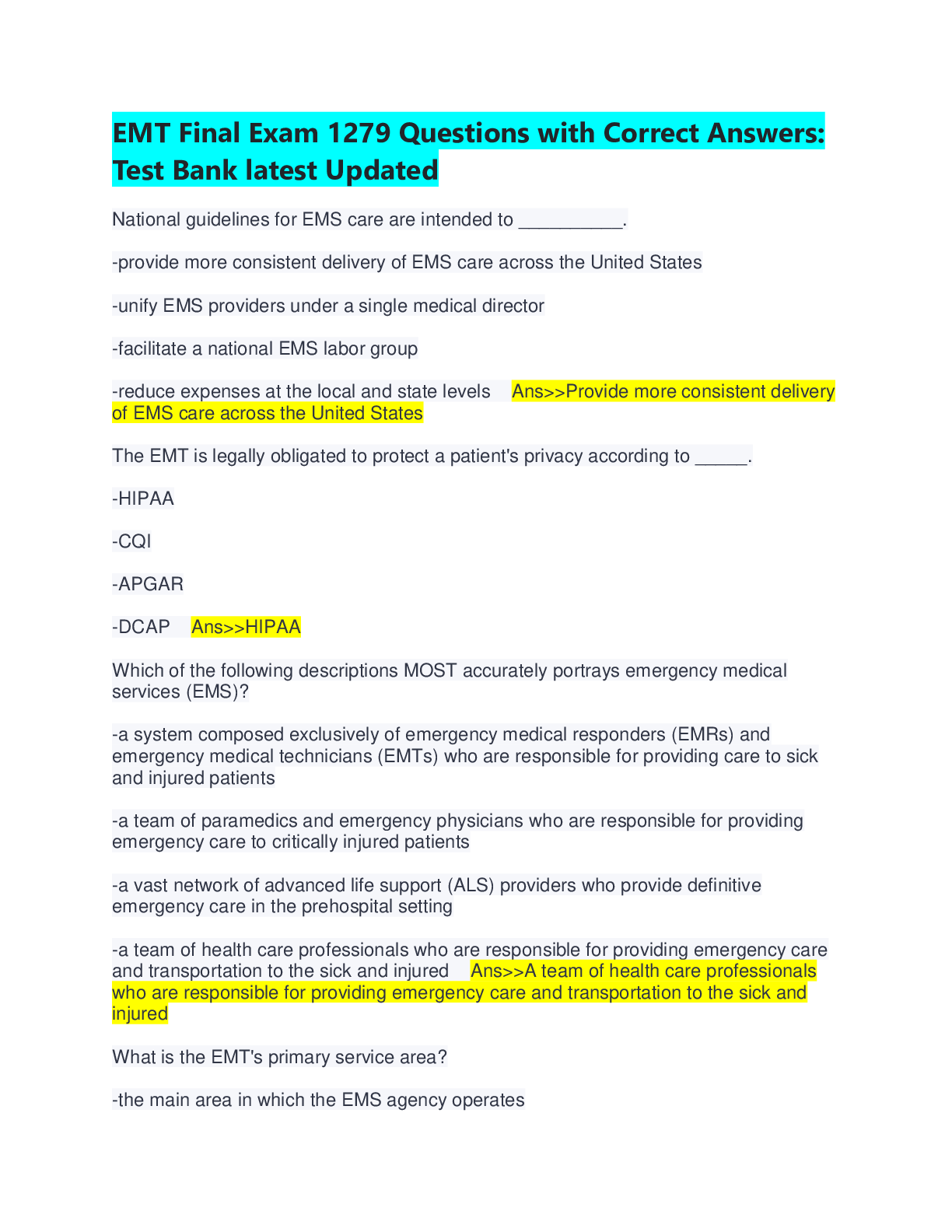
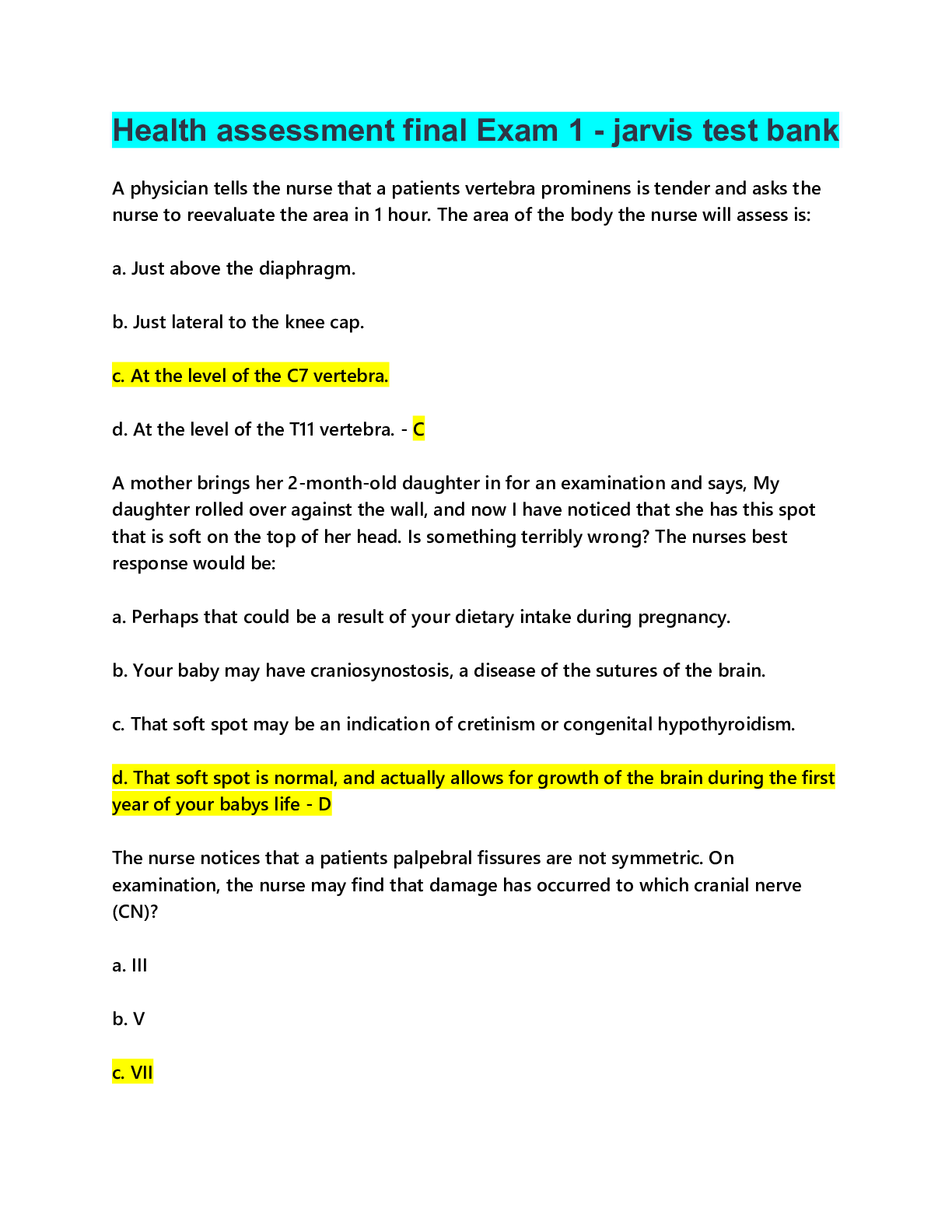
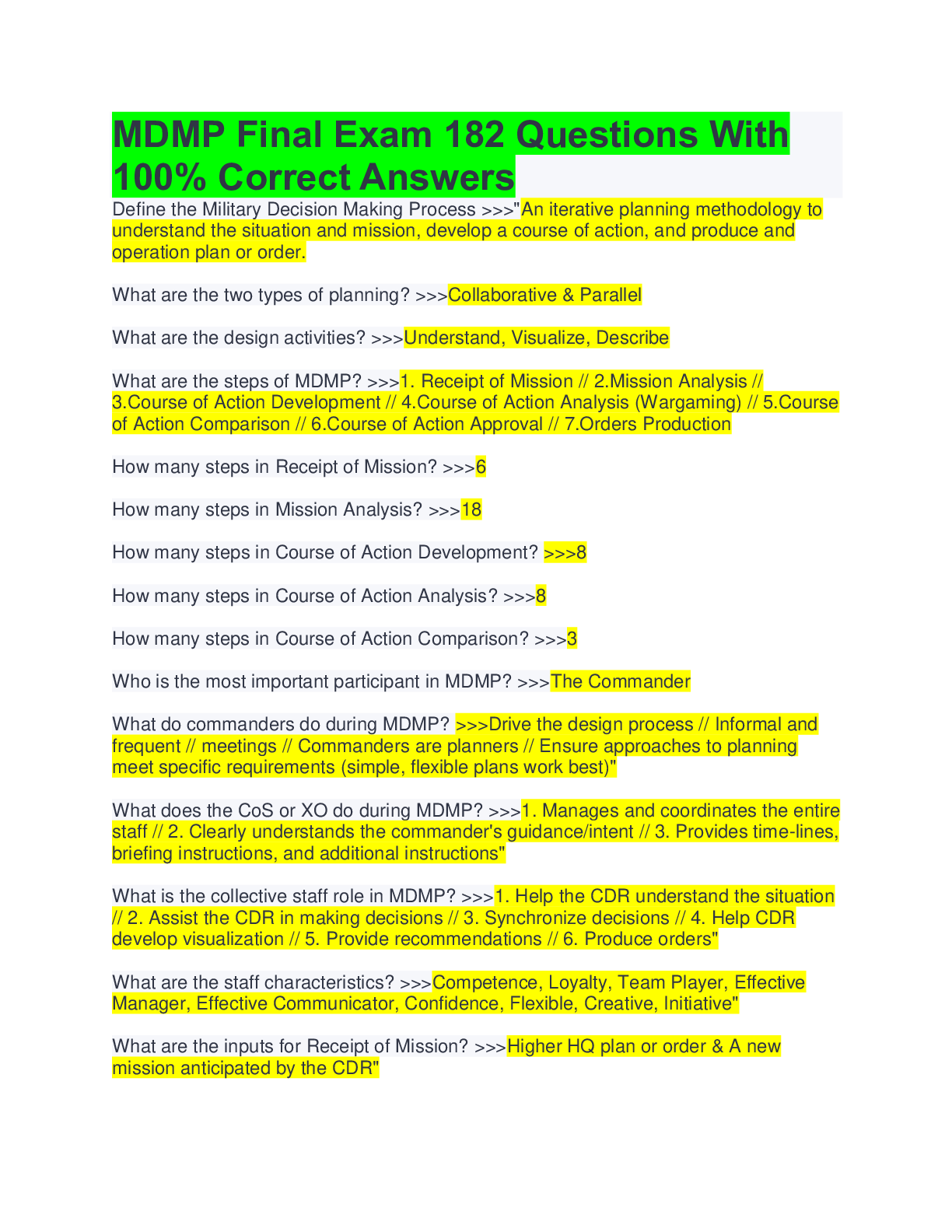
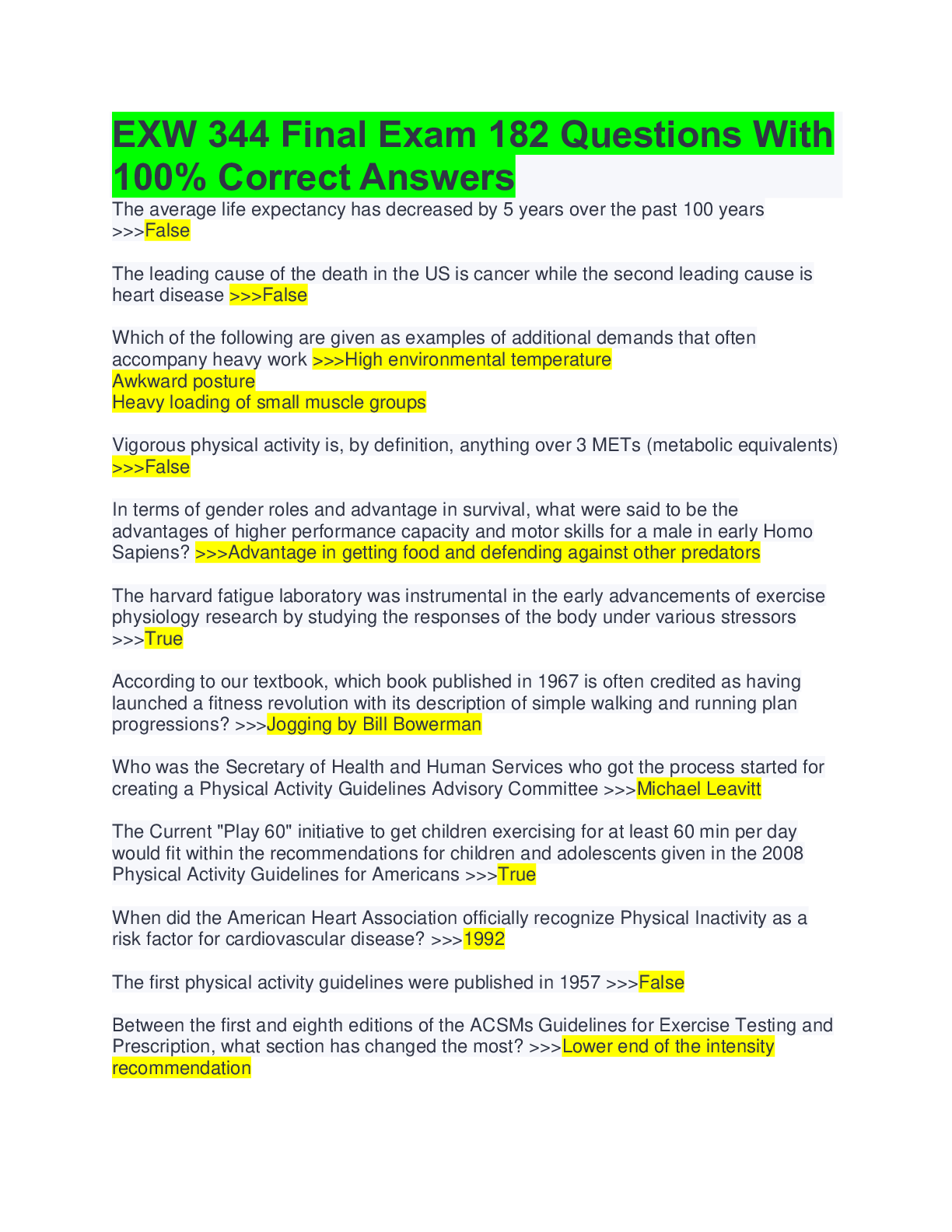
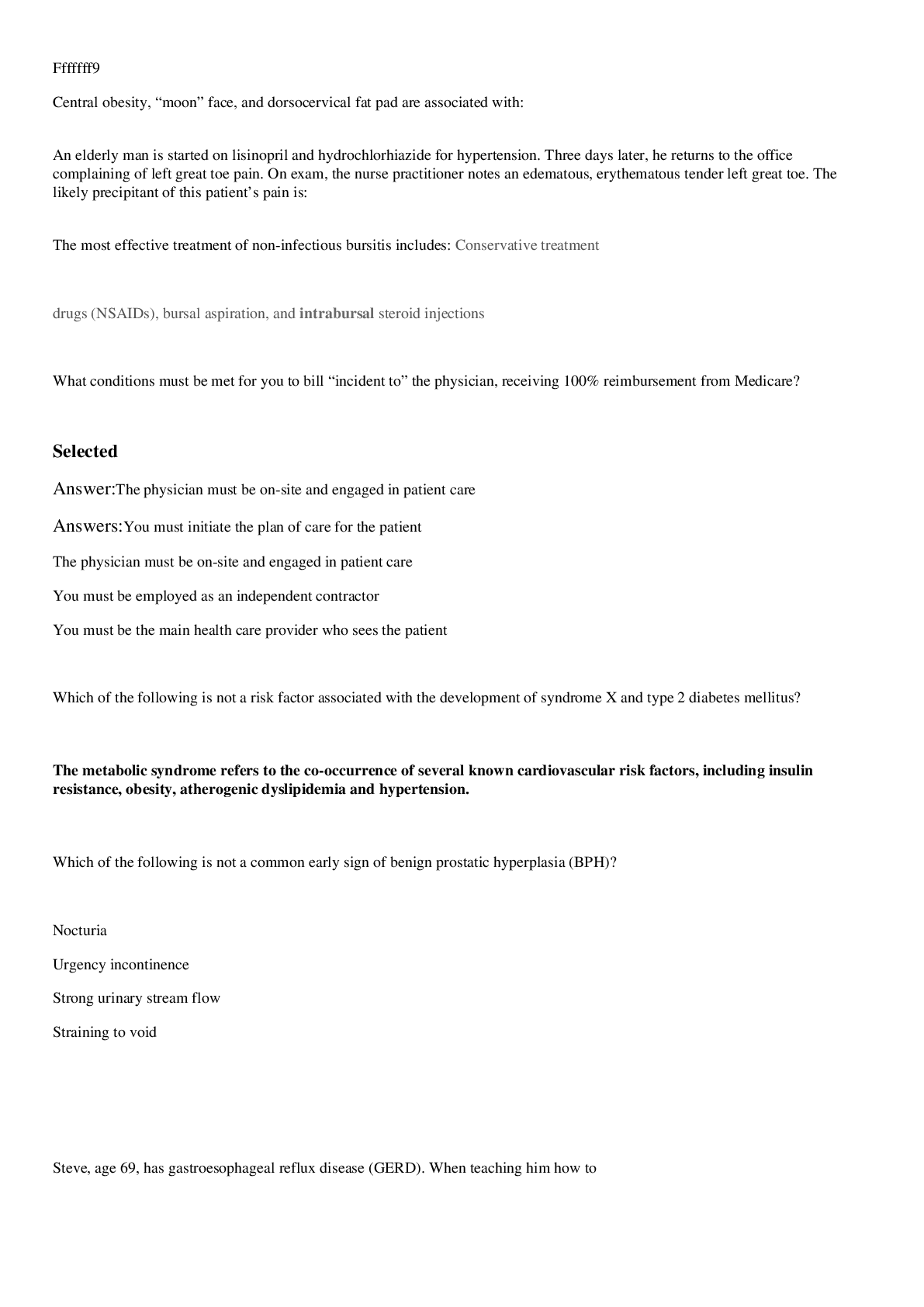
.png)
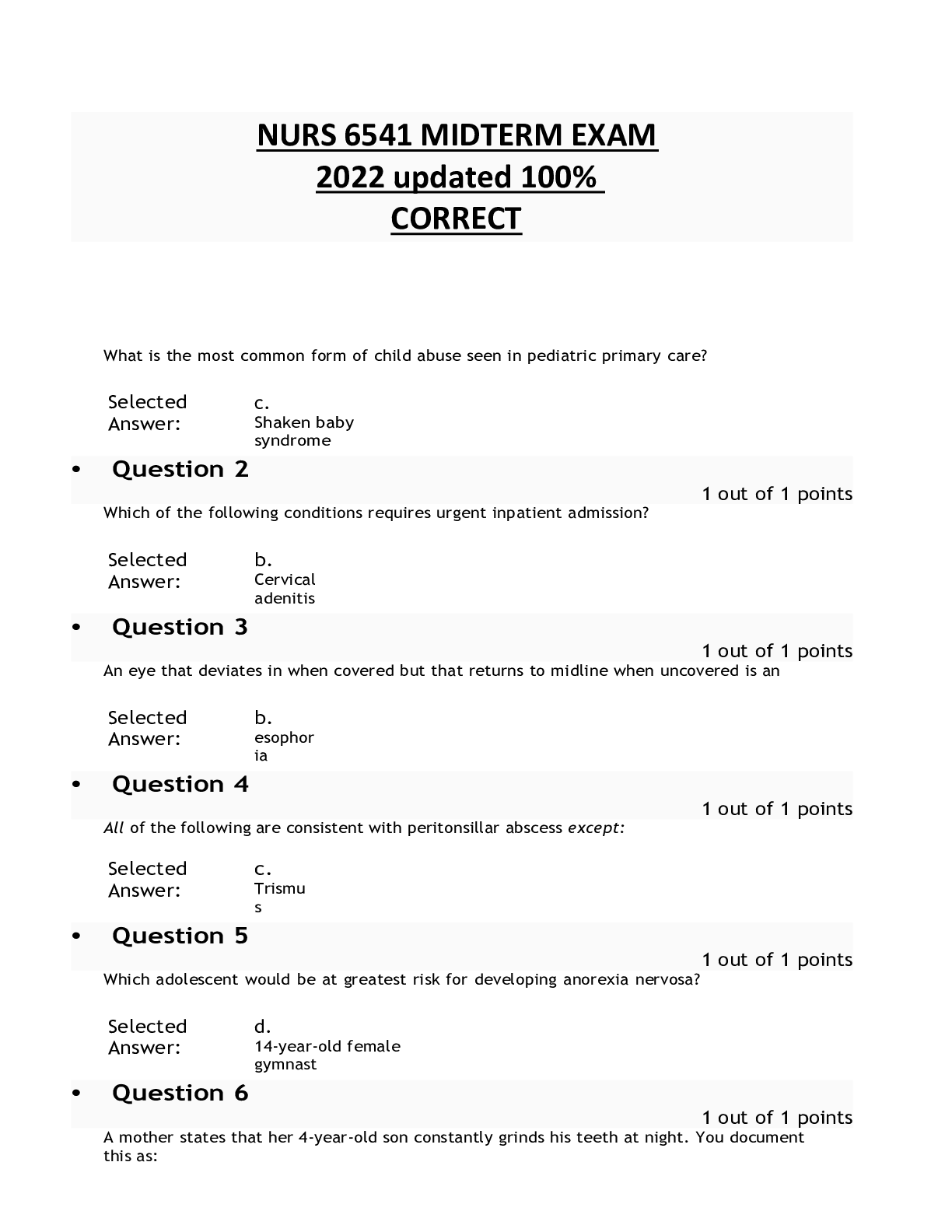
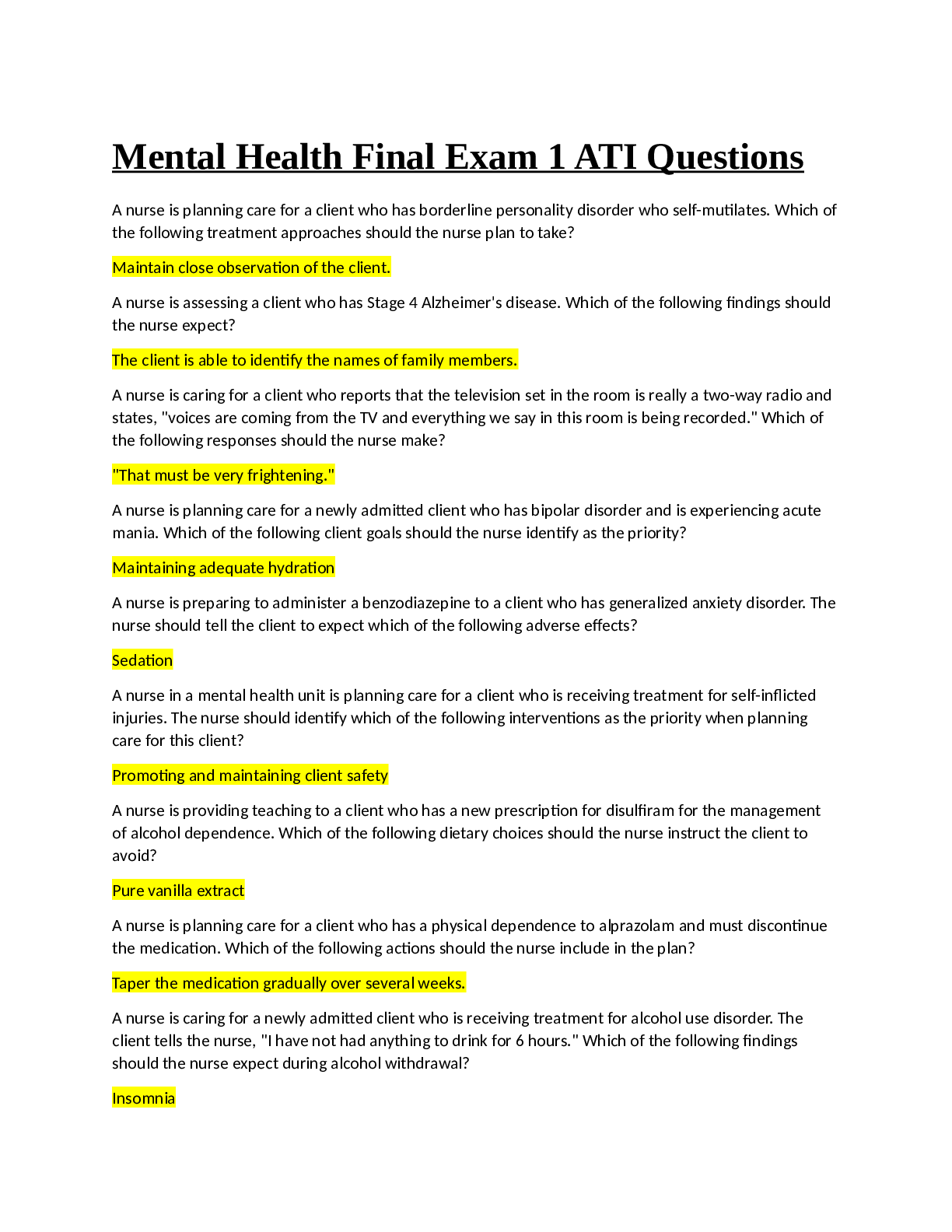
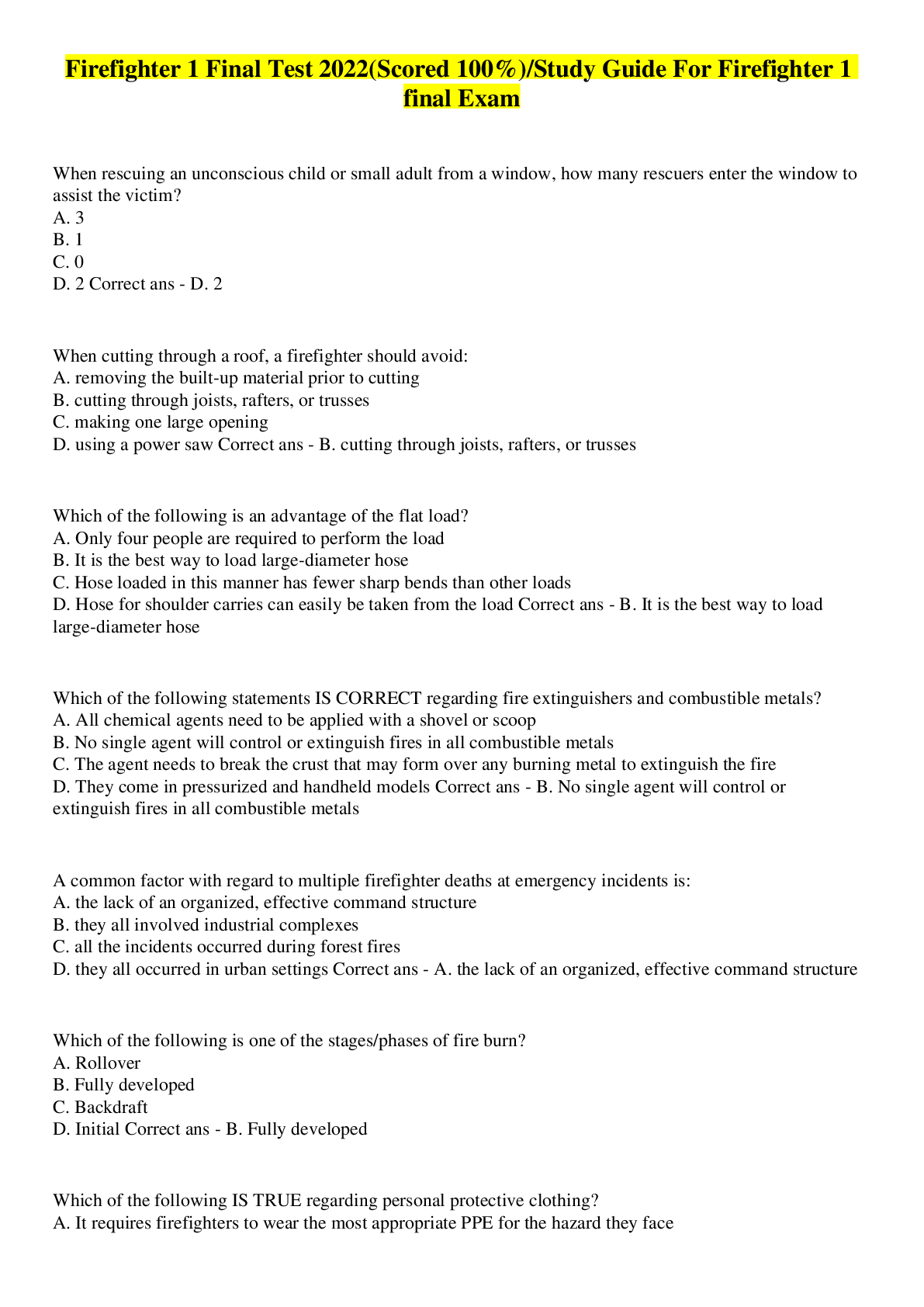
 (1).png)
